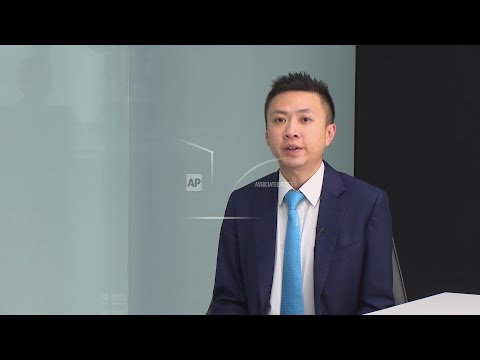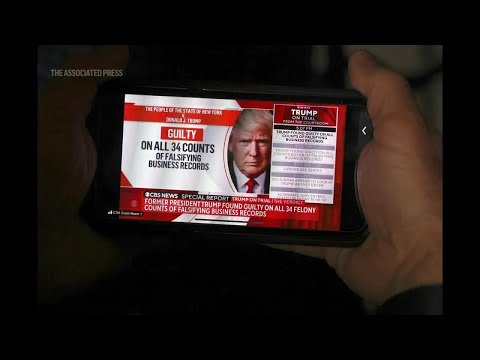(4 Feb 2025)
RESTRICTIONS SUMMARY:
ASSOCIATED PRESS
Hong Kong, China – 04 February 2025
1. Wide of Gary Ng sitting and talking
2. SOUNDBITE (English) Gary Ng, Senior Economist, Natixis Corporate and Investment Banking:
“If you look at the magnitude, China is probably trying to engineer a similar cost of around 10% of tariff that US has put on China. But it’s just trying to decide that it’s going to take a more targeted approach to minimise certain supply chain disruption, that it may be able or it could have suffered.”
3. Wide of Gary Ng sitting and talking
4. SOUNDBITE (English) Gary Ng, Senior Economist, Natixis Corporate and Investment Banking:
“China is trying to project itself not only as one of the biggest market in the world, but also from the supply chain perspective, it is one of the biggest manufacturers in many products, especially in the upstream. So I think the combination of using the selected tariff, export control and the restriction on market access to certain US firms basically reflect that China is trying to increase its bargaining chips and show the US it’s capability in terms of the negotiation process.”
5. Cutaway close of Cary Ng talking
6. SOUNDBITE (English) Gary Ng, Senior Economist, Natixis Corporate and Investment Banking:
“So far, it may be more on the symbolic side at this moment. But if this actually further escalate, it is really about the question on whether US firms can continue to sell services, especially related to technology into China. And if we have that in mind, then that would actually be quite a bigger issue because if you look at the US in May have trade deficit versus China. But if you look at surfaces, the US has trade surplus. So I think it kind of uncover an area that Trump or maybe a generally the market hasn’t really paid too much attention to. It is one of the tool that China may use, especially when it tries to boost the domestic substitution process in a lot of this tech or or basically software type of sectors.”
7. Wide of Gary Ng sitting and talking
8. SOUNDBITE (English) Gary Ng, Senior Economist, Natixis Corporate and Investment Banking
“Well, first, it is really about the trade surplus that the US is looking at in rather a negative way. So if China is willing to buy more goods from the US, then probably it can solve part of the problem. But of course some other issues remain would be the curb on the tech sector, of which whether the US is willing to export a certain type of chips to China and reduce the pressure, at least in the access of China chips and the development of A.I.. This will be another sharp focus. But of course, beyond the economic issue, China may bring the other issues on Taiwan, etc. to the table. But it’s probably hard to see any material change in this round of the trade war on negotiation.”
9. Wide and zoom-in of Gary Ng sitting and talking
STORYLINE:
China has countered President Donald Trump’s tariffs on Chinese products with tariffs of its own on multiple U.S. imports as well as announcing an antitrust investigation into Google and other trade measures.
China said it would implement a 15% tariff on coal and liquefied natural gas products as well as a 10% tariff on crude oil, agricultural machinery and large-engine cars imported from the U.S.
The tariffs would take effect next Monday.
Looking at the categories of the US products and the magnitude of China’s tariffs, Gary Ng, an economist in Hong Kong, said China is taking targeted approach to minimise supply chain disruption that could hurts itself.
AP video by Raf Wober
Find out more about AP Archive: http://www.aparchive.com/HowWeWork
Twitter: https://twitter.com/AP_Archive
Facebook: https://www.facebook.com/APArchives
Instagram: https://www.instagram.com/APNews/
You can license this story through AP Archive: http://www.aparchive.com/metadata/youtube/108ba88f617c49e19a7ca9b9a7c1f2ff
Author: AP Archive
Go to Source
News post in February 9, 2025, 3:04 pm.
Visit Our Sponsor’s:
News Post In – News





